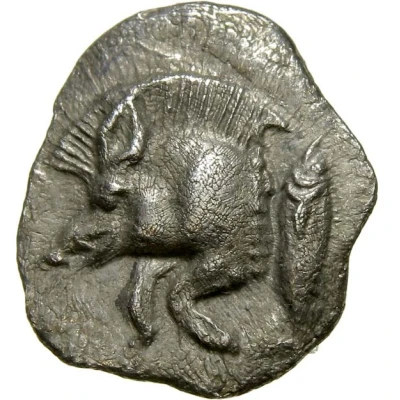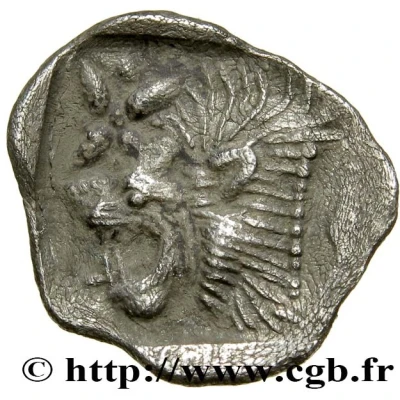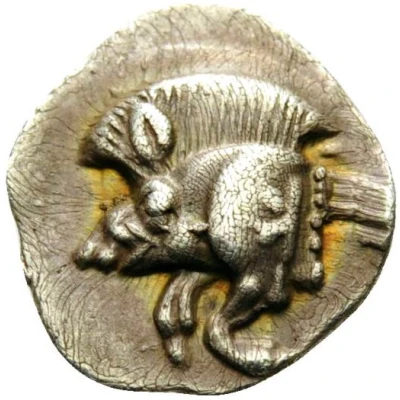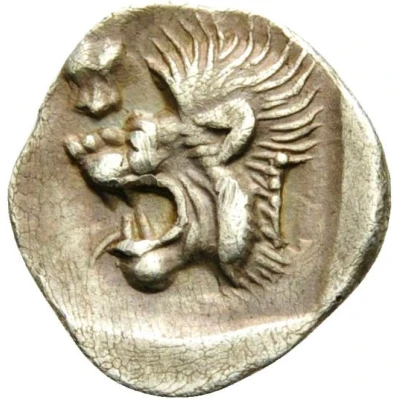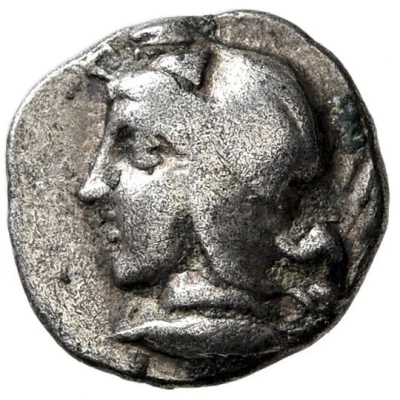
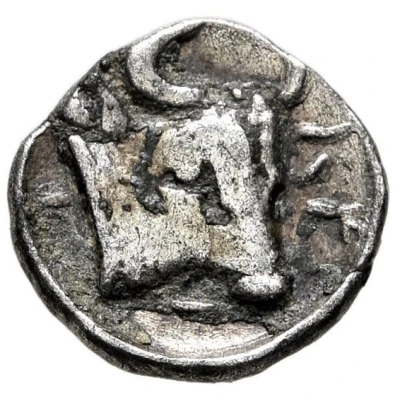

© Leu Numismatik
Hemiobol 450 BC - 400 BC
| Silver | 0.27 g | 7 mm |
| Issuer | Kyzikos (Mysia) |
|---|---|
| Period | City administration (600 BC - 1 AD) |
| Type | Standard circulation coin |
| Years | 450 BC - 400 BC |
| Value | Hemiobol (1⁄12) |
| Currency | Drachm (500-27BC) |
| Composition | Silver |
| Weight | 0.27 g |
| Diameter | 7 mm |
| Shape | Round (irregular) |
| Technique | Hammered, Incuse |
| Orientation | Variable alignment ↺ |
| Demonetized | Yes |
| Updated | 2024-10-10 |
| Numista | N#376160 |
|---|---|
| Rarity index | 94% |
Reverse
Head of bull, right
Script: Greek
Lettering: KYZI
Interesting fact
The Hemiobol coin was used as a form of currency in ancient Greece, specifically in the city of Kyzikos (Mysia) during the 5th century BC. The coin features an image of a bee on one side and a flower on the other, which symbolizes the city's agricultural wealth and its reputation for producing high-quality honey. The coin's small size and light weight made it an ideal currency for everyday transactions, and it was widely used in the region for buying and selling goods and services. Despite its small value, the Hemiobol coin played an important role in the ancient Greek economy and is now a valuable collector's item for numismatists.
